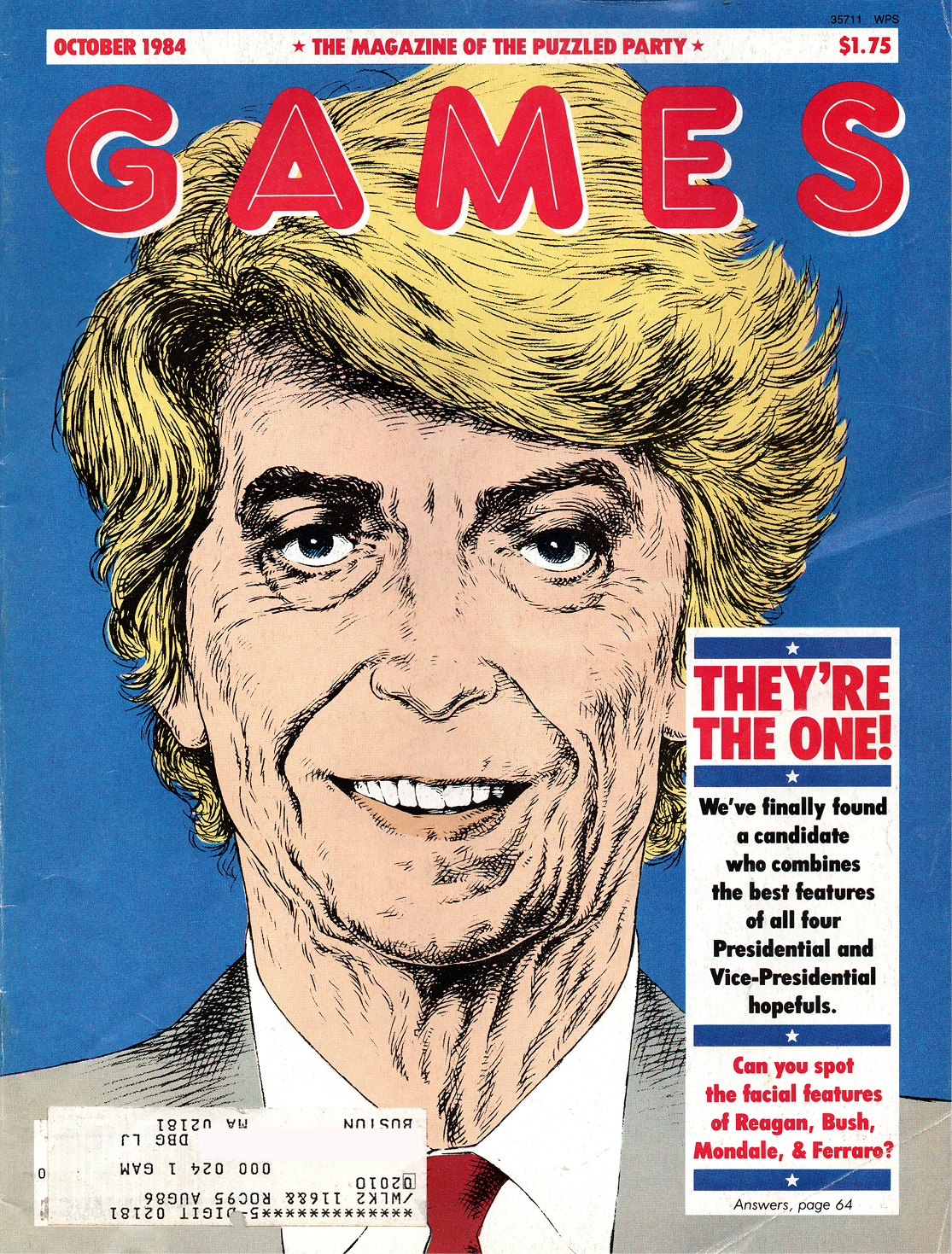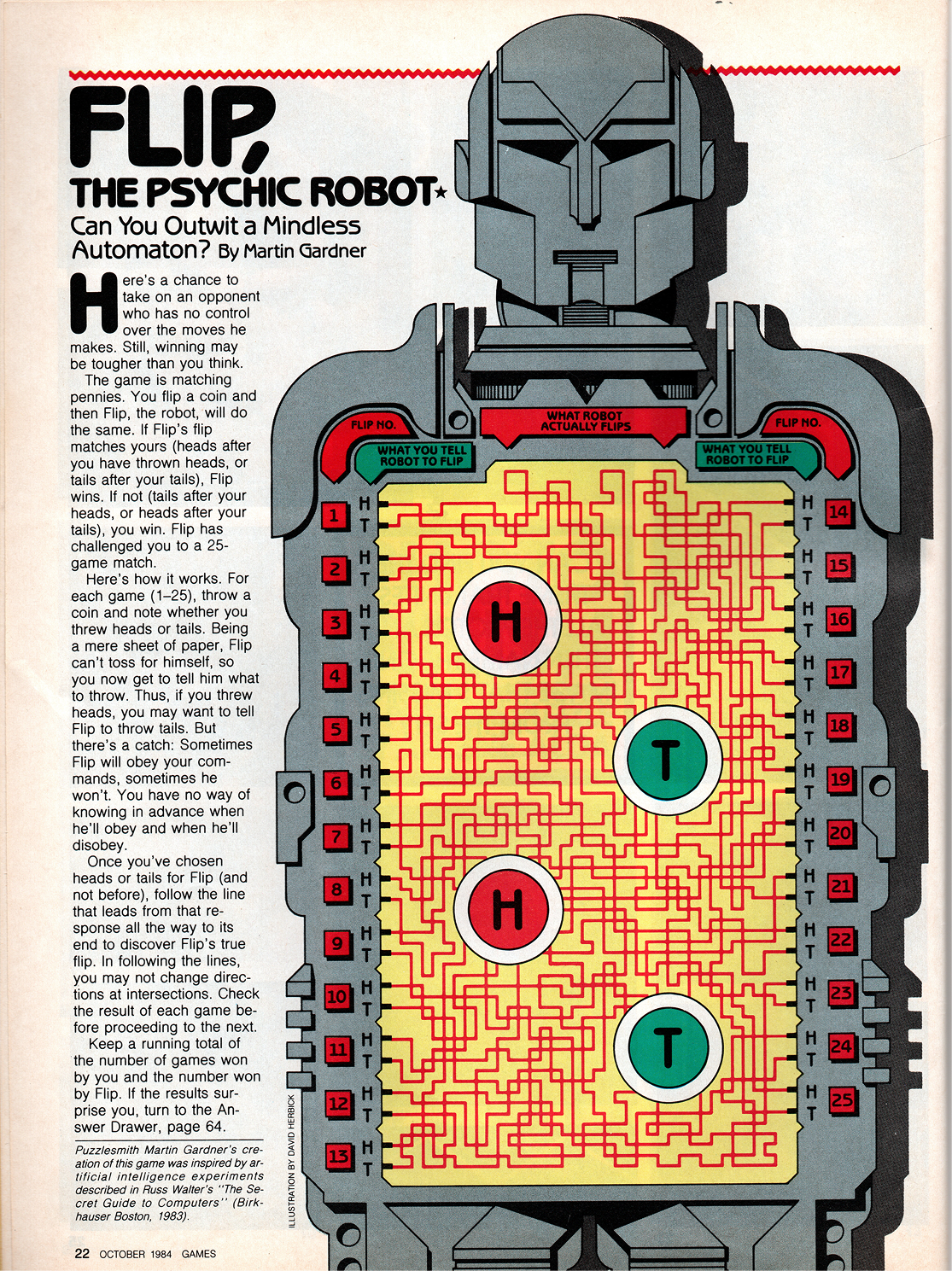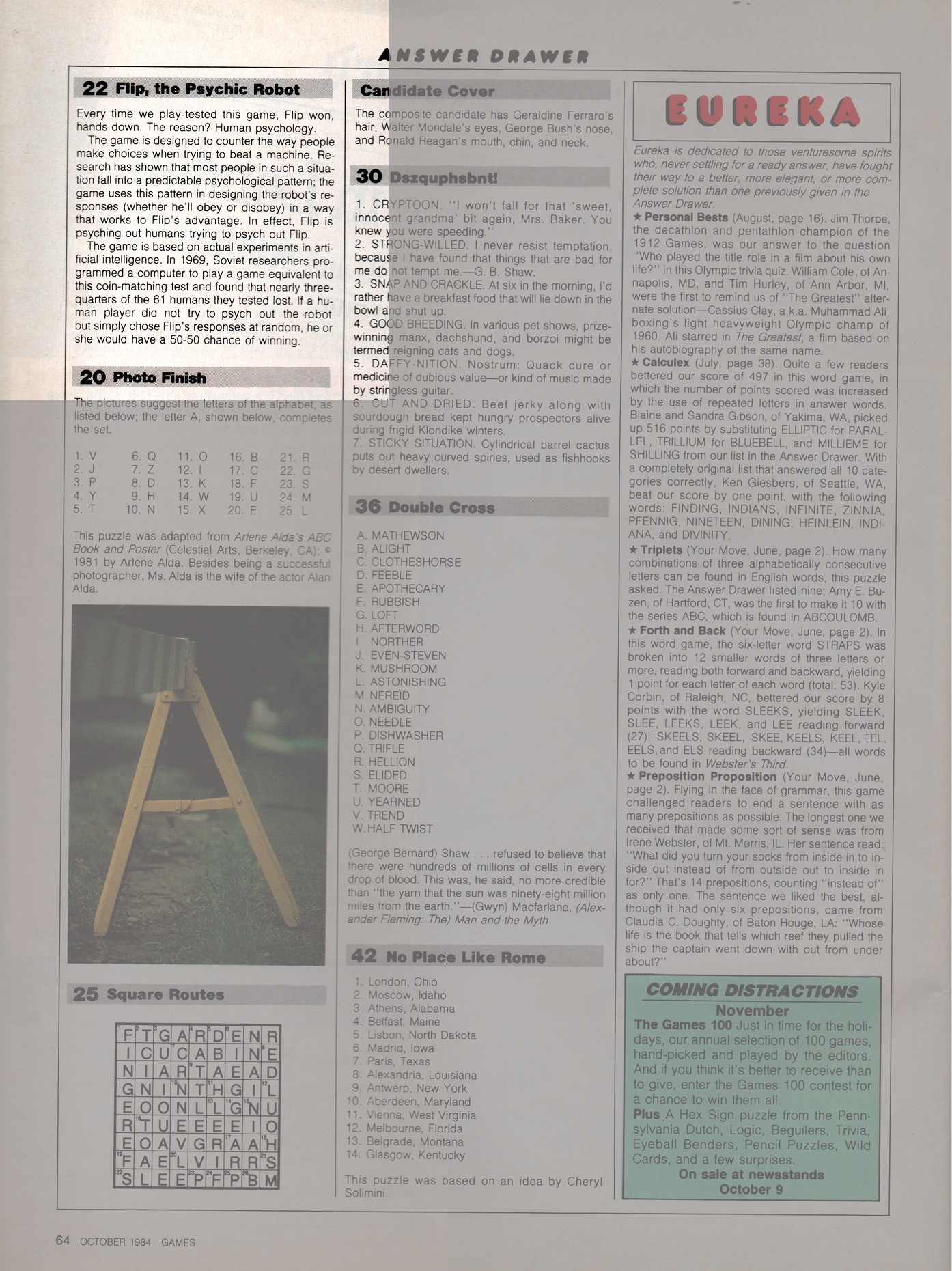Can you fool the psychic robot?
A puzzle from Games magazine and Martin Gardner
Amongst a pile of Games magazines I ordered recently from ebay is this issue, from October of 1984.

I love the "puzzled party" pun on the cover. I also love the eclectic puzzles posed by Martin Gardner in various issues of Games. Even in the issues I bought, his puzzles range from mathematics to poetry to logic.
This one, called Flip the Psychic Robot, is fun. Give it a go. (Hint: it doesn't matter where the lines actually lead.)

See the text contained in the image.
FLIP, THE PSYCHIC ROBOT: Can You Outwit a Mindless Automaton?
By Martin Gardner Here's a chance to take on an opponent who has no control over the moves he makes. Still, winning may be tougher than you think The game is matching pennies. You flip a coin and then Flip, the robot, will do the same. If Flip's flip matches yours (heads after you have thrown heads, or tails after your tails), Flip wins. If not (tails after your heads, or heads after your tails), you win. Flip has challenged you to a 25-game match. Here's how it works. For each game (1-25), throw a coin and note whether you threw heads or tails. Being a mere sheet of paper, Flip can't toss for himself, so you now get to tell him what to throw. Thus, if you threw heads, you may want to tell Flip to throw tails. But there's a catch: Sometimes Flip will obey your com-mands, sometimes he won't. You have no way of knowing in advance when he'll obey and when he'll disobey. Once you've chosen heads or tails for Flip (and not before), follow the line that leads from that response all the way to its end to discover Flip's true flip. In following the lines, you may not change directions at intersections. Check the result of each game before proceeding to the next. Keep a running total of the number of games won by you and the number won by Flip. If the results surprise you, turn to the Answer Drawer, page 64. Puzzlesmith Martin Gardner's creation of this game was inspired by artificial intelligence experiments described in Russ Walter's "The Secret Guide to Computers" (Birk-hauser Boston, 1983).
Try it before you check out the answer. I'm curious about the AI research in "The Secret Guide to Computers" that inspired this.
The answer
Every time we play-tested this game, Flip won, hands down. The reason? Human psychology. The game is designed to counter the way people make choices when trying to beat a machine. Research has shown that most people in such a situation fall into a predictable psychological pattern; the game uses this pattern in designing the robot's responses (whether he'll obey or disobey) in a way that works to Flip's advantage. In effect, Flip is psyching out humans trying to psych out Flip. The game is based on actual experiments in artificial intelligence. In 1969, Soviet researchers programmed a computer to play a game equivalent to this coin-matching test and found that nearly three-quarters of the 61 humans they tested lost. If a human player did not try to psych out the robot but simply chose Flip's responses at random, he or she would have a 50-50 chance of winning.

